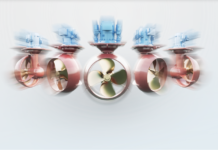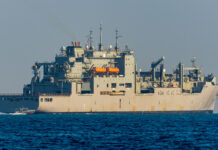
Wärtsilä, a technology group, has entered into a contract with the Norwegian shipowner Eidesvik to provide the equipment needed to convert the offshore platform supply vessel (PSV) Viking Energy to operate on ammonia fuel.
The vessel, currently under contract with energy giant Equinor, is set for conversion in early 2026 and aims to begin ammonia-powered operations within the first half of that year, marking it as the world’s first in-service ammonia-fueled ship. Alongside chartering the vessel, Equinor is also contributing financing for the conversion.
Wärtsilä will supply the engine, complete fuel gas supply system, and exhaust after-treatment necessary for the conversion, featuring its newly introduced ammonia solution.
With global regulations aiming for net-zero emissions by mid-century, ammonia is expected to be crucial in helping the industry meet its emission reduction targets. A recent Wärtsilä report underscores the significance of sustainable fuels in achieving these goals set by the International Maritime Organization (IMO).
While current decarbonization measures, such as improving fuel efficiency, can reduce shipping emissions by up to 27%, sustainable fuels like ammonia will be essential to addressing the remaining 73%.
Eidesvik, for instance, was the first to deploy an LNG-powered offshore PSV and received the world’s first Battery Power notation for Viking Energy, thanks to Wärtsilä’s battery system.
This collaboration is part of the ‘Apollo’ project, co-funded by the Horizon Europe framework programme, which aims to accelerate Europe’s transition to climate neutrality by 2050 through supporting innovative research and solutions across climate, energy, and mobility sectors.
In addition to the Wärtsilä 25 Ammonia engine, the company will provide a comprehensive ammonia solution, including the AmmoniaPac Fuel Gas Supply System, the Wärtsilä Ammonia Release Mitigation System (WARMS), and a selective catalytic reduction (SCR) system designed for ammonia.
A service agreement for maintenance is also a critical component of the deal. The conversion is scheduled for early 2026, with final commissioning expected in the second quarter of 2026.





